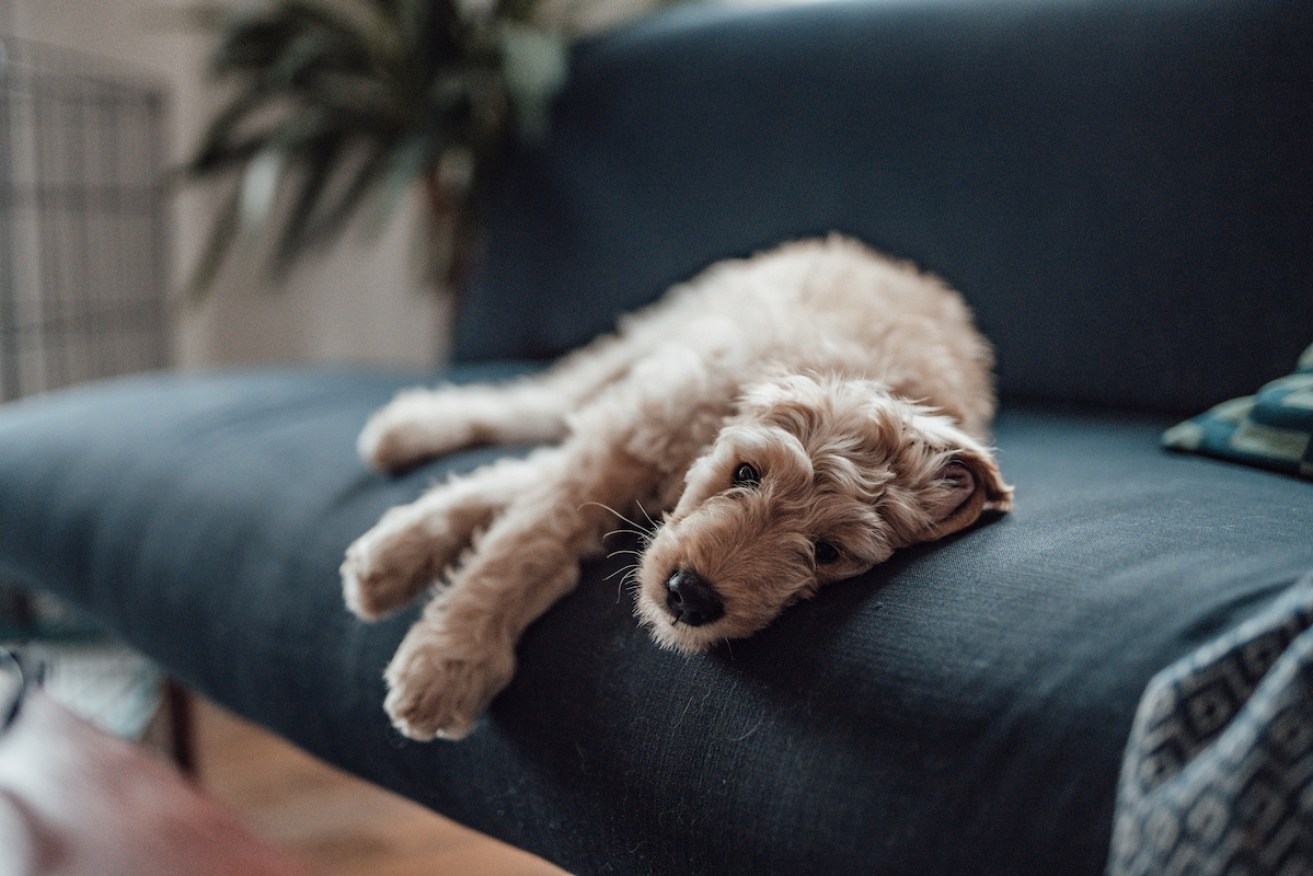As we return to work, how will our dogs cope with being alone?


For pandemic puppies, being home alone might be completely new to them. Photo: Getty
After almost two years in and out of lockdowns, our precious pups have grown accustomed to 24-hour companionship.
But as people return to work and school, how will our dogs adjust?
Dr Sarah Zito, senior scientific officer at RSPCA Australia, told The New Daily that changes to our routines can be stressful or confusing for some dogs if they’re used to having people home all day.
“For dogs who have found new homes during the pandemic, being at home on their own might be completely new to them,” Dr Zito said.
In the UK, a recent survey of 6004 dog owners found 58 per cent of dogs were not left alone for more than five minutes on any day during the week in lockdown.
Meanwhile, the percentage of dogs being left alone for over three hours at a time decreased from 48.5 per cent, pre-lockdown, to just 5.4 per cent during lockdown.
In a time of significant change, it’s important to monitor your dog’s behaviour – especially if they might be experiencing separation anxiety.
Common signs include whining, howling, house soiling (despite being house trained) as well as destructive behaviours, such as digging into carpets and walls.
Dr Gabrielle Carter, behaviour and rehabilitation specialist at RSPCA Victoria, told The New Daily there are other signs we might not notice because they don’t leave any traces behind.
“Things like pacing,” Dr Carter explained. “You may have a dog that is pacing up and down the house, but when the owners come home the pacing stops.”
Another example is excessive salivation that can dry up throughout the day or be confused for urine.
Preventative measures for separation anxiety begin with helping your dog feel more confident and secure when they’re home alone.
Stick to the same walking and feeding routine as much as possible, because if you change everything at once, it’s likely the anxiety will just get worse.
“Gradually introduce your dogs to very short departures. So you might leave the house just to check the letterbox or you might go and get a coffee and come back,” Dr Carter explained.
Leave for five to 20 minutes at first, building up to an hour or two hours away from home.
“The important part is to make sure the dog is not stressed when you’re not home,” Dr Carter said.
To do this, she recommends setting up any sort of smart device with a camera in the house so you can monitor your dog in real time.
That way, it will give you an idea of how long is too long away from home.
It’s also important to create a safe space for your dog by building up a positive association with an area at home. That could be their bed, cushion, or an open crate as it has a den-like feel.
“Try and encourage them to spend time in that area even when you’re at home,” Dr Carter said.
You can do this by giving them special treats or safe toys they can chew on to keep them occupied.
Avoid tough love.
“You don’t want to put them outside, shut the back door and let them cry, because that creates a negative association with being separated from their owner,” Dr Carter said.
Other things to avoid include punishment.
If you come home to damaged furniture, take a breather and think about why your dog might have done that.
“They were probably panicking and really distressed, so this isn’t an appropriate time to be yelling at the dog. That will just make it worse,” Dr Carter said.
As for coming and going out the door, Dr Zito advised that you should make them as boring as possible.
“It can be tempting to shower an excited dog with attention when you walk in the door, but often keeping it low key is best,” Dr Zito said.
“This helps teach your dog that coming and going is nothing to get excited or anxious about.”
In the case that you’re doing everything you can and your dog is still struggling with separation anxiety, then it’s time to seek professional advice from a veterinarian.








